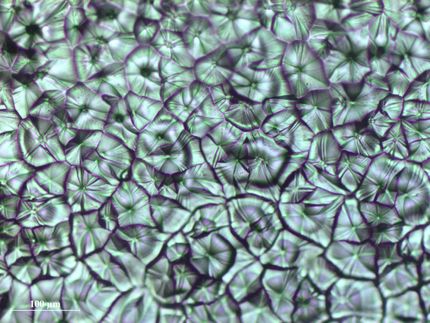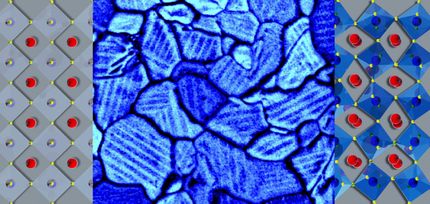Ferroelectric materials react unexpectedly to strain
Researchers thought they had the behaviors of ferroelectric materials mostly figured out
"The conventional wisdom is that you can put almost any material under mechanical stress, and provided the stress is coherently maintained, the material will become ferroelectric or exhibit an electrical polarization," said James Rondinelli, assistant professor of materials science and engineering at Northwestern University's McCormick School of Engineering. "If you apply similar stresses to a compound that's already ferroelectric, then its polarization increases."
Rondinelli and his team, however, have made a theoretical discovery that flips this widely accepted fact on its head. They found that when a unique class of ferroelectric oxides are stretched or compressed, the polarization does not simply increase as expected. Instead, it goes away completely.
"Based on everything we have known for the past two decades," Rondinelli said, "this is completely unexpected."
Ferroelectrics are found everywhere: in smart phones, watches, and computers. Because they are so technologically useful, researchers have long been interested in creating new or improved ferroelectric materials -- especially in two-dimensional geometries as thin films where they are readily integrated into electronic devices. Ferroelectricity is a property that occurs when a material exhibits a spontaneous electric polarization, which arises from is a shift of positive and negative charges in opposite directions.
When strain is applied to the class of oxides called layered perovskites grown as a thin film, they initially react the same way as other ferroelectrics. Their polarization increases. But if further strain is applied, the polarization completely turns off.
Layered perovskites have recently seen a resurgence of attention because they host functional physical properties like high-temperature super conductivity and support electrochemical or photocatalytic energy conversion processes. Their structures are also much more defect tolerant. Rondinelli's discovery adds a new level of interest to these popular materials.
"You can't strain the material too much because it might lose its functionality," Rondinelli said. "But if you operate near where the polarization turns on and off, you really have a switch. If you're monitoring the polarization for a logic device or memory element, you can apply a small electric field to traverse this boundary and simultaneously read and write the on-and-off state."
Rondinelli's team made this discovery using a theoretical materials tools and quantum mechanical simulations and is now working with experimental collaborators to validate the finding in the laboratory. Another next step is to better understand how this new functionality could help or hinder ferroelectric applications.
In the meantime, Rondinelli said researchers will now need to be careful when applying mechanical stress to layered perovskite ferroelectrics. Applying too much strain could have unintended consequences.
"This finding motivates us to recalibrate our intuition regarding what interactions are expected between mechanical forces and dielectric properties," Rondinelli said. "It requires us to think more carefully, and I suspect there is much more to learn."
Original publication
Other news from the department science

Get the chemical industry in your inbox
By submitting this form you agree that LUMITOS AG will send you the newsletter(s) selected above by email. Your data will not be passed on to third parties. Your data will be stored and processed in accordance with our data protection regulations. LUMITOS may contact you by email for the purpose of advertising or market and opinion surveys. You can revoke your consent at any time without giving reasons to LUMITOS AG, Ernst-Augustin-Str. 2, 12489 Berlin, Germany or by e-mail at revoke@lumitos.com with effect for the future. In addition, each email contains a link to unsubscribe from the corresponding newsletter.
























































